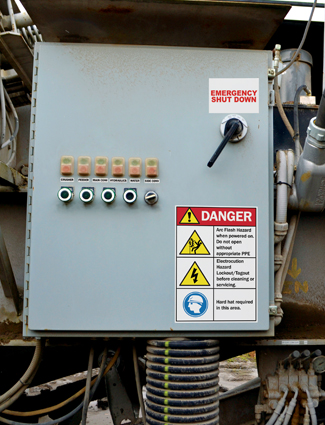MSHA and Others Paving New Paths for Safety
03
February,
2023
2 MINUTE READ

With large moving machinery and equipment, mining worksites are dangerous and have various deadly hazards. Powered hauling and vehicle accidents rose this year, putting the Mine Safety and Health Administration on high alert. The federal entity and numerous companies worldwide are looking to improve mining safety through traditional methods and new technology.
Digging Deep into Statistics
Already this year there have been more than 185 injuries involving mining haulage equipment, a hazard that alone killed nine miners. According to MSHA, this is the highest number of like fatalities since 2006. The number of mining deaths by year are:
- 24 in 2021 (as of July)
- 29 in 2020
- 24 in 2019
- 27 in 2018
In response to these upward trends in accidents and injuries, MSHA in July conducted a national Stand Down for Safety Day. The event aimed to educate miners, refocus on training, and hazard awareness and sharing safety best practices for powered haulage and vehicle rollovers. Some of the top safety focuses were on:
- Steps and ladders on surface mining vehicles, which can be several stories tall
- Working from heights
- Pedestrian/traffic to help improve pedestrian and operator visibility
- Falling debris/equipment/tools which can hit workers
- Crushed by mobile equipment and machinery such as conveyor systems
- Seat belts, which should be provided and worn in any vehicle
A proud supporter of mining safety, Brigade Electronics says it is focusing on improving moving machinery and equipment through intuitive vehicle safety systems. These systems have made a huge impact on enhancing safety for these industries, helping to eliminate vehicle blind spots and alert groundworkers to moving vehicles, according to Corey Heniser, CEO and vehicle safety expert at Brigade. He says some of the best technology for off-road vehicles includes camera monitors, backup and warning alarms, radar obstacle detection, swing-zone alerts, and CCTV.
"Incidents involving vehicles can be extremely time consuming and costly to resolve," according to Heniser. "A lack of solid evidence can often mean companies accept liability or operators are unfairly blamed, leading to increased costs for businesses and stress for operators. Mobile digital recorders capture vehicle data and footage ? providing an accurate account of events."
Practical Prevention
 These types of vehicle and equipment technologies can help with operator and pedestrian blind spots and collision prevention. While technology is important in improving powered hauling and vehicle safety, there are a few additional tips to reinforce an accident-free worksite.
These types of vehicle and equipment technologies can help with operator and pedestrian blind spots and collision prevention. While technology is important in improving powered hauling and vehicle safety, there are a few additional tips to reinforce an accident-free worksite.
- Traffic control: Ensure safe pedestrian and vehicle paths so that the right of way is always clear. Create safe zones, and use lights and signs to support everyone on the worksite.
- Communications/attention: CB stations, eye/radio contact,
- Pre-op checklist: Conduct a thorough evaluation of the worksite, taking notes on what can be improved, necessary equipment, and other important information workers might need for the day. Examine work areas surfaces, dumpsites, berms, etc.
- PPE: Personal protective equipment should be available and appropriate for working conditions. Use PPE that helps workers keep a clear vision of the site and improves worker visibility.
- Training: Train workers on equipment and site protocols. They should also have clear expectations and instructions, such as how to safely approach equipment operators.
When it comes to mining sites and worker safety, collisions can be vastly reduced when all workers are equipped proficiently. Management can provide adequate training and support worker safety through visual communication. Small investments can make huge differences and have huge results for safety, efficiency, and compliance. With a team effort, prevent powered haulage accidents, injuries, and deaths.
RELATED RESOURCES

OSHA, States Ramp Up Safety Program Push
Some states are noticing an increase in workplace deaths and are moving safety program assistance to the ...
Read
Mine Safety & Health Report
Miners are making significant safety strides, decreasing fatalities over the last 35 years, according to a ...
Read
Quality Takes Control at Woodward Aerospace
Lean principles and safety best practices run the show at Woodward Aerospace. The company prides itself in ...
Read.png)


